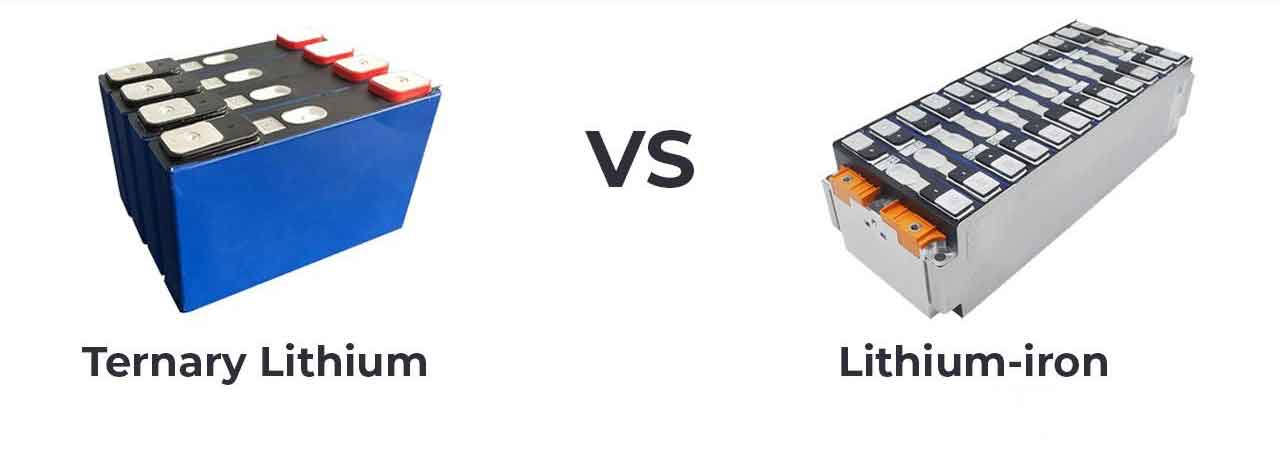Abstract:
This study focuses on the thermal runaway behavior of LiFePO4 and ternary lithium-ion batteries (LiNi0.5Co0.2Mn0.3O2, NCM523) under heating conditions. By employing external heating methods, we investigated the thermal runaway characteristics of these batteries with different cathode materials. The results provide insights into the thermal runaway mechanisms and offer potential early warning signals for battery safety.

Introduction
With the rapid development of electrochemical energy storage technologies, lithium-ion batteries (LIBs) have gained significant attention due to their high energy density, long cycle life, and environmental friendliness. However, thermal safety issues pose a significant challenge to the further application and development of LIBs. Thermal runaway, characterized by uncontrolled temperature rise and potential fire or explosion, is a primary concern.
This study aims to investigate the thermal runaway behavior of LiFePO4 and ternary lithium batteries under predictable thermal abuse conditions. By analyzing the heat production, gas generation, and electrical parameters during thermal runaway, we aim to provide a reference for early warning and fire protection strategies.
Experimental Methods
Battery Samples:
- LiFePO4 Battery: 3.2V, 100Ah, square-shaped (200mm×170mm×30mm)
- Ternary Lithium Battery: 3.6V, 90Ah, square-shaped (150mm×100mm×50mm)
Testing Equipment:
- BT2000 Battery Test System: For adjusting the state of charge (SOC) to 100%.
- Heating Plates: For inducing thermal runaway through external heating.
- Temperature Sensors: For monitoring temperature changes during the experiment.
- Gas Analyzer: For analyzing the composition of gases released during thermal runaway.
Experimental Procedure:
- Adjust the SOC of the batteries to 100% using the BT2000 Battery Test System.
- Place the batteries on heating plates and apply a constant power to induce thermal runaway.
- Monitor temperature, gas composition, and electrical parameters throughout the experiment.
Results and Discussion
Thermal Runaway Behavior:
- LiFePO4 Battery: During heating, the battery undergoes temperature rise, safety valve opening, and intense smoke release. Thermal runaway occurs 6 minutes after the safety valve opens, with no combustion.
- Ternary Lithium Battery: The battery experiences temperature rise, safety valve opening, smoke release, and immediate combustion. Thermal runaway occurs within 1 second after the safety valve opens, accompanied by sustained flame and intense heat release.
Temperature Changes During Thermal Runaway:
Table 1: Peak Temperatures and Time to Peak for Various Temperature Sensors
| Battery Type | Sensor Location | Time to Peak (s) | Peak Temperature (℃) |
|---|---|---|---|
| LiFePO4 | TC1 | 2821 | 516.1 |
| TC5 | 2894 | 534.2 | |
| Ternary | TC1 | 2020 | 887.3 |
| TC5 | 1964 | 1052.4 |
Heat Release Analysis:
- LiFePO4 Battery: Total heat release (THR) = 0.162 MJ; Maximum heat release rate (HRR) = 1.81 kW.
- Ternary Lithium Battery: THR = 3.147 MJ; Maximum HRR = 134.85 kW.
The ternary lithium battery exhibits significantly higher heat release and a more rapid energy release during thermal runaway.
Gas Composition During Thermal Runaway:
- Both batteries produce similar gases during thermal runaway, including H2, CO2, CO, and hydrocarbons.
- The ternary lithium battery has a higher CO2 content due to combustion.
Voltage Changes During Thermal Runaway:
- Both batteries show two distinct voltage drops during thermal runaway.
- The first voltage drop is due to the dissolution of electrode materials.
- The second voltage drop occurs due to internal short-circuiting caused by melting and shrinking of the separator.
Table 2: Key Times in Thermal Runaway Process
| Battery Type | Safety Valve Opening (s) | First Voltage Change (s) | Thermal Runaway (Temperature, s) | Second Voltage Change (s) |
|---|---|---|---|---|
| LiFePO4 | 2256 | 2237 | 2610 | 2576 |
| Ternary | 1995 | 1949 | 1995 | 1960 |
Voltage changes precede temperature changes, providing an early warning signal for thermal runaway.
Conclusions
This study investigated the thermal runaway behavior of LiFePO4 and ternary lithium batteries under heating conditions. The main findings are summarized in the following table:
Table 3: Summary of Key Findings
| Parameter | LiFePO4 Battery | Ternary Lithium Battery |
|---|---|---|
| Peak Temperature (℃) | 534.2 | 1052.4 |
| Total Heat Release (MJ) | 0.162 | 3.147 |
| Maximum Heat Release Rate (kW) | 1.81 | 134.85 |
| Gas Composition | H2, CO2, CO, hydrocarbons | H2, CO2, CO, hydrocarbons (higher CO2 content) |
| Voltage Changes | Two distinct drops, with early warning signal | Two distinct drops, with early warning signal |
| Safety Risk | Lower, no combustion | Higher, with combustion and intense heat release |
The ternary lithium battery exhibits a higher safety risk due to its more rapid and intense energy release during thermal runaway. The study highlights the importance of monitoring voltage, temperature, and gas composition for early warning and fire protection strategies.
By understanding the thermal runaway behavior of these batteries, we can develop more effective safety measures to mitigate the risks associated with lithium-ion batteries in energy storage systems.
